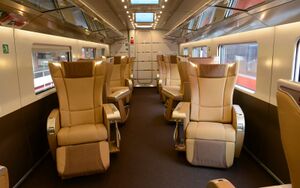Paretian Railway Service
| Reporting mark | SFP |
|---|---|
| Locale | Paretia with connecting services to Etruria, Gaullica, and Montecara |
| Dates of operation | 1955–present |
| Track gauge | 1,500 mm (4 ft 11 1⁄16 in) standard gauge |
| Electrification | 25 kV / 50 Hz AC overhead lines |
| Length | 15,145 km |
| Headquarters | Precea |
| Website | sfp.co.pa |
Paretian Rail Service (Luzelese: Serviço Ferroviário Paretiano, abbreviated SFP) is a passenger rail and rail services company serving Paretia with connecting services to Etruria, Gaullica, and Montecara. The company operates over 15,000 kilometers of route, slightly more than two-thirds of which is electrified, and runs over 10,000 trains per day.
History
Rail transport had been a key component of the inter-city transport system in southeast Euclea since the heyday of steam trains in the mid- to late 19th century. By the 1950s, however, long-distance rail in Paretia was in tatters. The country had emerged from the Great War and Solarian War with badly damaged infrastructure and no surviving rail companies with enough human, material, and financial resources to rebuild.
The company expanded its operations in the 1970s, issuing debt to finance capital improvements that included a massive electrification program and the construction of dozens of new station buildings. The unexpectedly high inflation of this period left the company far deeper in debt by the early 1980s than management had anticipated, though, and in 1982 the national government was forced to acquire nearly €300 million in debt that the company could not service. By the early 1990s the company was again on stable financial ground, and a major project to make trains and stations accessible began in 1993. Current investment priorities for the company include the purchase of new, lighter and more efficient rolling stock and the acquisition of more retail space in and near stations that can be rented out at a profit.
Corporate structure and budget
Operating budget by source, FY 2019
As of the last restructuring in 2009, the company's operating divisions are:
- Regional and commuter operations
- Long-distance passenger operations
- Freight and logistics
- Infrastructure
- Rolling stock maintenance
Capital improvements are funded through a combination of corporate bonds and subsidies from the national and subnational governments. SFP services have an overall farebox recovery ratio of approximately 50%, with the balance made up through trust fund disbursements, advertising, leasing facilities and rolling stock, and additional subsidies by the national and subnational governments. The total operating budget for 2019 was approximately €7 billion.
SFP employs nearly 15,000 workers, making it one of the largest employers in Paretia.
Train categories and routes
SFP operates the following service categories:
| Name | Abbreviation | Role |
|---|---|---|
| Exprima | X | High-speed services stopping only at major cities |
| Direta | D | Mainline intercity services |
| Rexio | R | Regional trains stopping at all or nearly all stations along a given line |
| Nocta | N | Night trains equipped with sleeping cars |
Exprima
Exprima is the fastest class of train, traveling at speeds up to 350 km/h. A project to fully build out a system of dedicated high-speed track has been underway since 1993.
Direta
Direta routes are mainline rail stopping at fewer stations than Rexio and more than Exprima, operating a variety of equipment that can reach maximum speeds of between 150 and 200 km/h. It is in essence "standard" intercity rail operating at conventional speeds.
Rexio
Rexio is the designation for regional trains making all or nearly all stops along a line. Approximately 40% of routes served only by Rexio are electrified, with the remainder served by diesel multiple units.
Nocta
Nocta routes operate dedicated sleeper trains on long-distance routes. Accommodations include roomettes for single travelers and compartments sleeping two to four, with or without private toilets and showers.
Classes and fares
SFP operates first and second classes on all of its services. First-class tickets come with access to first-class waiting rooms at stations where available. Aboard the train, first-class passengers enjoy complimentary snacks and drinks, newspapers and magazines, and access to dedicated lounge and dining cars and meeting rooms on select trains. All first-class seats come with a table, reading lamp, and attendant call button. First-class sleepers come with a private toilet, shower, and sink. The bed converts to a couch and table for daytime use, and an attendant is on call to bring meals, drinks, and snacks and provide turndown service.
Fares
SFP uses a complex fare structure based on distance, date and time of travel, service class, train type, how far in advance the ticket is booked, and various other factors. This allows the company to maximize both profit and the general availability of tickets by matching supply and demand.
Reservations
Reservations are required for single sleepers but are optional for all other tickets. Reserving a seat incurs a small additional charge.
To encourage the use of trains as part of a longer trip, SFP has entered into an air-rail alliance with the national carrier Viagem Paretia. Trains codeshare with select flights, allowing passengers to seamlessly connect to far-off destinations and even to save time relative to having to make connecting or regional flights.
Rolling stock

Exprima
| Image | Type | Class | Top speed | Built |
|---|---|---|---|---|

|
High-speed train | Serie 101 | 350 km/h | 2005–present |
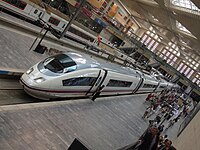
|
High-speed train | Serie 103 | 350 km/h | 2006–present |
Direta
| Image | Type | Class | Max. speed | Built |
|---|---|---|---|---|
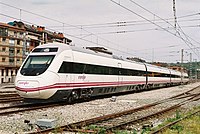
|
Electric multiple unit | Serie 201 | 250 km/h | 2001, 2004 |
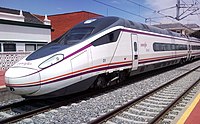
|
Electric multiple unit | Serie 215 | 250 km/h | 2006–present |

|
Twin power cars + coaches | Serie 231 | 250 km/h | 2010–present |
Nocta
| Image | Type | Class | Max. speed | Built |
|---|---|---|---|---|

|
Electric locomotive + sleeper cars | Serie 251 (locomotive) | 200 km/h | 1991–1996 |
Rexio
| Image | Type | Class | Max. speed | Built |
|---|---|---|---|---|
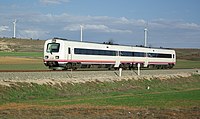
|
Diesel multiple unit | Serie 500 | 180 km/h | 1986–2001 |
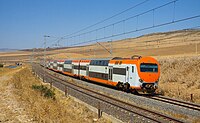
|
Electric multiple unit | DF20 Super | 140 km/h | 1998–2000 |

|
Electric multiple unit | CFP 460 series | 120 km/h | 2003–present |

|
Electric multiple unit | CFP 440 series | 120 km/h | 1993–2001 |
Non-revenue
| Image | Type | Class | Max. speed | Built |
|---|---|---|---|---|

|
Electric locomotive | Serie 1500 | 135 km/h | 1967–1988 |

|
Diesel locomotive | Serie 1550 | 120 km/h | 1973–1990 |
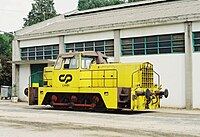
|
Diesel locomotive | Serie 1150 | 58 km/h | 1966–1967 |
